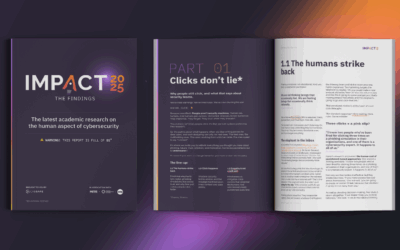Hosted by CybSafe, IMPACT is the free, annual event that shines a spotlight on the latest research into human factors and cybersecurity.
Imagine a room (or two) full of the world’s leading security minds, all dissecting the human side of cybersecurity.
This report is your cheat sheet to the biggest takeaways in human cyber risk. No fluff, just the juicy bits.








